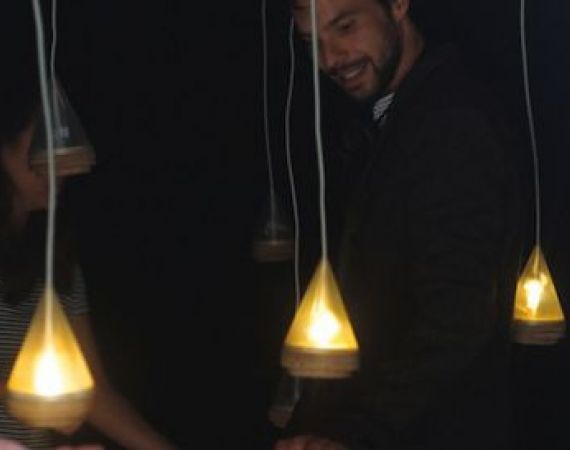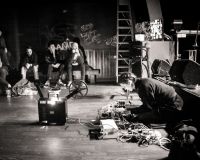Studio blog
Posted on Fri 5 Jun 2015
New Residents, Reach Robotics and an Industrial Robolution
We are delighted to announce the three amazing individuals who will join us as part of our New and Emerging Talent Residency programme this summer. Co-founder of Open Bionics, Sammy Payne will use the residency to explore alternative looks and functions of low-cost bionic hands. Game designer and…

Beacon Choir - a project to be developed in the Studio by new resident Thomas Williams
Posted by

Jasmine Butt
Jasmine is a musician, synth builder and AV artist who is currently exploring modular synthesis.We are delighted to announce the three amazing individuals who will join us as part of our New and Emerging Talent Residency programme this summer. Co-founder of Open Bionics, Sammy Payne will use the residency to explore alternative looks and functions of low-cost bionic hands. Game designer and producer, Roz Dean will be developing and testing ideas for workshops, playful events and street games, and composer and designer Thomas Williams will be developing Beacon Choir; an interactive sound and light installation. We are so excited to have them all on board. Read more about them all here.
Our huge congratulations to Studio resident Silas Adekunle who has been accepted onto the prestigious Qualcomm Robotics Accelerator, powered by Techstars in San Diego. From now until mid-September, Silas and his digital-physical robot gaming company, Reach Robotics will take part in the accelerator programme to develop their battling quadrupeds, the Mecha Monsters.
We are stoked to welcome internationally recognised game and experience designer, Ken Eklund to the Studio. Ken creates “immersive stories that seek to write themselves” which call on the public to imagine and create ‘authentic fictions’. Ken delivered a brilliant talk this week, in collaboration with iDocs, a DCRC project investigating new forms of interactive documentary. He spoke about his past projects, including World Without Oil, FutureCoast and Giskin Anomaly, which all explore real-world issues through collaborative play. The talk was filmed, and will be posted on the iDocs website shortly. Ken is embarking on an R&D residency here for the next few weeks, exploring the theme of ‘deoccupation’ (robots nicking peoples’ jobs).
Resident Satragni Sarkar is currently conducting research into human-robot interaction at Bristol Robotics Lab. He is investigating people’s levels of trust in a robotic co-worker, by conducting tests in which a human and Baxter, a 300 pound, 6 foot robot construct an object together. By varying both the robot’s level of accuracy and its facial expression (i.e. in one test, Baxter will work perfectly and smile, in the other, he might drop the object and display a sad face) Satragni will be able to assess the person’s reaction to this, will the person pick up the dropped object and help Baxter? Will the person’s accuracy levels be influenced by that of the robot?
Matt Bjerregaard Walsh and Yvonna Hubova have been tinkering with Arduino based drones in the Studio, preparing for a University of Edinburgh research project. Yvonna will be attaching thermal cameras to drones to assess thermal loss in housing. Matt is helping to modify a robotic eye system that will allow the drone to navigate complex urban environments unscathed. They will be conducting test flights in Bristol and then taking the drones back up to Edinburgh to begin the main body of their research.
Two fascinating books exploring the portrayal of war in gaming culture have just been published. Resident Esther McCallam-Stewart has written a chapter in ‘Theatre of War’, a book documenting live-action role play games that are based on contemporary conflicts, and a foreword for ‘The First World War in Computer Games’, exploring how modern views of WW1 are increasingly being shaped by videogames, and what it means for a player to be a soldier.